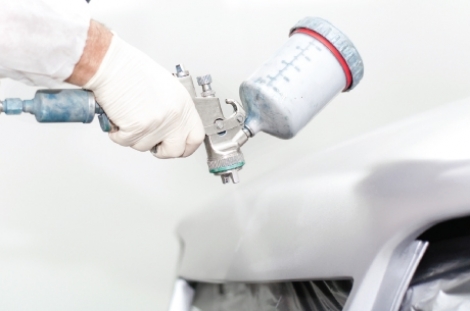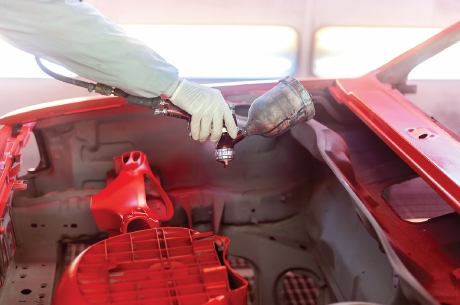Why is Safety Culture the Cure?

A collision center injury or fatality has the power to sweep people into a frenzy. While national media covers high profile fatalities, little attention gets paid to the minor injuries occurring on a daily basis. Minor injuries are, however, the type of injury businesses deal with on a daily basis, and amount to 4.1 million incidents a year. When a death occurs at the workplace, a spotlight shines on the issue of employee safety, but after two days, the story is forgotten, and injuries continue to burden the industry. With the proper education and training, you can decrease injuries substantially by implementing a positive safety culture.
What Causes Minor Injury?
So what causes minor injury? How does a collision center address this problem? Firstly, minor injury is mostly the result of small lapses in judgment by employees who are in harm’s way. A collision center’s lack of concern or initiative for safety is not the cause of injury. Secondly, in order to address the problem of injury, facilities must understand the concept of regulation not being the cure, so they do not attempt to fix the problem with the wrong solution.
The constant pressure of productivity and minor lapses in judgment is what pushes injury into an everyday reality for businesses. It is the minor lapses in judgment occurring on a daily basis that sum up to the 4.1 million employees who suffer an injury or work-related illness every year. Regulations are certainly decreasing the number of accidents, but they aren’t the complete solution.
Why Regulations Are Not the Answer
Regulations and safety practices have been effective in decreasing the number of fatalities, but they do little to address the minor injuries taking place every day that make the biggest impact. Regulations might prompt employees to check off boxes before operating equipment, or initiate a manager to keep track of injuries every month, but they do nothing to deter employees from making small mistakes. Collision Centers need to recognize that umbrella regulations won’t address the minor incidents. What regulations don’t account for is human error. Humans have not evolved past daily lapses in judgment, and therefore precautions are frequently overlooked, and injuries occur constantly.
Ironically, human’s worst liability is also our greatest asset; the ability to exercise judgement. In the workplace, regulations don’t always give relevance to every scenario. Unique situations arise that require employees to think on their feet and use discretion. This is where a safety culture and excellence is imperative.
Culture, an Effective Method to Prevent Injury
Collision Centers must look past traditional policy and standard practices and instill a culture that prioritizes safety above all other concerns. A company must ingrain a new way of doing things that will change employees at their core, and cause them to react to situations with a mindset of safety.
Culture is a widely used term, and falls under many nuances of definition. Articles, blogs, and journals examine and discuss culture. But what is it exactly? It can be described as a set of values, beliefs, and common practices within an organization that create an atmosphere and influence behavior. Or it could simply be described as, “a way of doing things.” Whatever your definition, culture has the power to push a company forward or backward.
In this circumstance, a safety culture must be created and constantly reinforced to where an employee’s judgment is pushed in the right direction. A positive safety culture will marginalize the error created by humans.
Ingraining Safety Culture
Ingraining a safety culture can take time. It first demands the initiative of the higher-ups setting the right example. Safety culture starts with the top, and trickles down. It does not start with the front lines, but those who are overseeing productivity. Management must show they are taking a newfound safety culture seriously. Employees then observe the actions of their supervisors, and adjust their actions in accordance.
A safety culture does not only mean that employee safety supersedes speed of activity. It means employees have adapted to a new way of doing tasks. With enough time, this will translate into a sustainable safety culture. Safety in the workplace is dependent on the culture. If it is generally acceptable to take short-cuts when operating heavy machinery, injuries will ensue. Conversely, if the culture’s emphasis is on personal safety, the employee’s actions will align with the safety culture.
Safety culture is a mindset that doesn’t depart an employee at the end of a workday. It must be an accepted set of values that translate into actions employees practice unconsciously. Once the culture is communally accepted, it pushes employees of all levels to think of safety and urges them to make the right decision when the time comes. The entirety of the workforce must pursue their daily activities within the framework of safety. This type of culture will also ensure the sustainability of safety and the advantages it provides.

Steps You Can Take to Create a Positive Safety Culture
- First, make sure you have clearly defined safety as it applies to employees at all levels of the company.
- Create and uphold a vision or goal that is shared by all members of the company.
- Understand what specific hazards are causing injury. Once this is realized, an analysis can be conducted to uncover the root of the problem.
- Talk to employees who are in the way of injury every day, and create strategies that do not just work in theory.
- Provide resources so employees who are in the way of danger will always have recourse if they are concerned.
- Establish a committee that oversees all safety practices.
- Develop a system where all injuries are reported, as well as the cause of the incident.
- Uphold values that promote safety.
- Put into place simple tactics that will prevent the root cause.
- Sustain a system where everyone holds themselves and those around them accountable—no matter their position.
An established safety culture has the power to push a company in any direction. A safety culture can define how employees generally act, and how they choose to present themselves in the business world. A strong safety culture also impacts new employees and exemplifies the kind of behavior they should emulate. A company’s reputation can also often times be contingent on their culture. In short, a strong culture has the power to drive your company forward.
If you’d like to learn more about how to establish a positive safety culture at your collision center, visit the KPA website.

